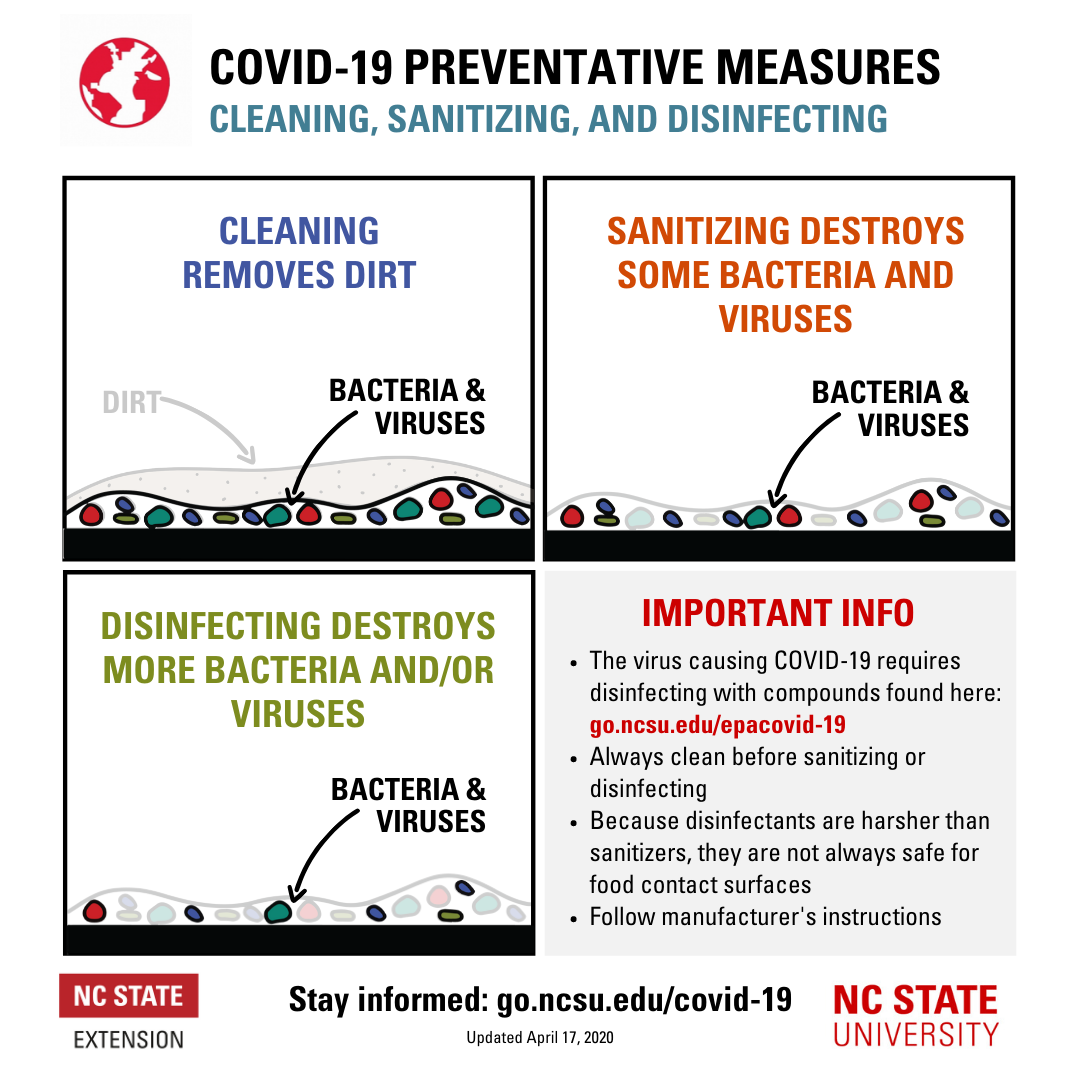Cleaning and Disinfecting
go.ncsu.edu/readext?678552
en Español / em Português
El inglés es el idioma de control de esta página. En la medida en que haya algún conflicto entre la traducción al inglés y la traducción, el inglés prevalece.
Al hacer clic en el enlace de traducción se activa un servicio de traducción gratuito para convertir la página al español. Al igual que con cualquier traducción por Internet, la conversión no es sensible al contexto y puede que no traduzca el texto en su significado original. NC State Extension no garantiza la exactitud del texto traducido. Por favor, tenga en cuenta que algunas aplicaciones y/o servicios pueden no funcionar como se espera cuando se traducen.
Português
Inglês é o idioma de controle desta página. Na medida que haja algum conflito entre o texto original em Inglês e a tradução, o Inglês prevalece.
Ao clicar no link de tradução, um serviço gratuito de tradução será ativado para converter a página para o Português. Como em qualquer tradução pela internet, a conversão não é sensivel ao contexto e pode não ocorrer a tradução para o significado orginal. O serviço de Extensão da Carolina do Norte (NC State Extension) não garante a exatidão do texto traduzido. Por favor, observe que algumas funções ou serviços podem não funcionar como esperado após a tradução.
English
English is the controlling language of this page. To the extent there is any conflict between the English text and the translation, English controls.
Clicking on the translation link activates a free translation service to convert the page to Spanish. As with any Internet translation, the conversion is not context-sensitive and may not translate the text to its original meaning. NC State Extension does not guarantee the accuracy of the translated text. Please note that some applications and/or services may not function as expected when translated.
Collapse ▲A lot of the guidance around preventing spread of COVID-19 says to clean and disinfect surfaces. But what does that mean? Are cleaning and disinfecting different? What about sanitizing or sterilizing?
Those are all important questions, and the answer is yes, they are all different. It is important to use the right steps in the right order, especially when trying to prevent the spread of illness.

Cleaning removes residues (soil or organic material) from a surface using soap or detergent and water. Cleaning must occur first, since many chemical sanitizers and disinfectants won’t work if a surface is dirty.
Sanitizing surfaces reduces the number of bacteria and viruses to a safer level. Sanitizing can be done with heat chemicals, and it is important to follow manufacturer directions carefully, as concentration and time on a surface are really important to reducing bacteria and viruses.
Disinfecting reduces the levels of bacteria and viruses even more than sanitizing, and may require higher concentrations of chemical compound or a longer contact time. Note: not all disinfectants are safe for food contact surfaces. Follow manufacturer’s instructions.
Sterilizing is the removal of all bacteria and viruses, and usually requires high heat and pressure. This isn’t usually possible for most surfaces in most environments, and is essential most often for medical equipment.
For more details, check out this infosheet on cleaning, sanitizing, and disinfection, and follow us on social media as we talk cleaning and disinfection this weekend. Follow @SafePlatesFSIC on Facebook, Twitter, and Instagram.


